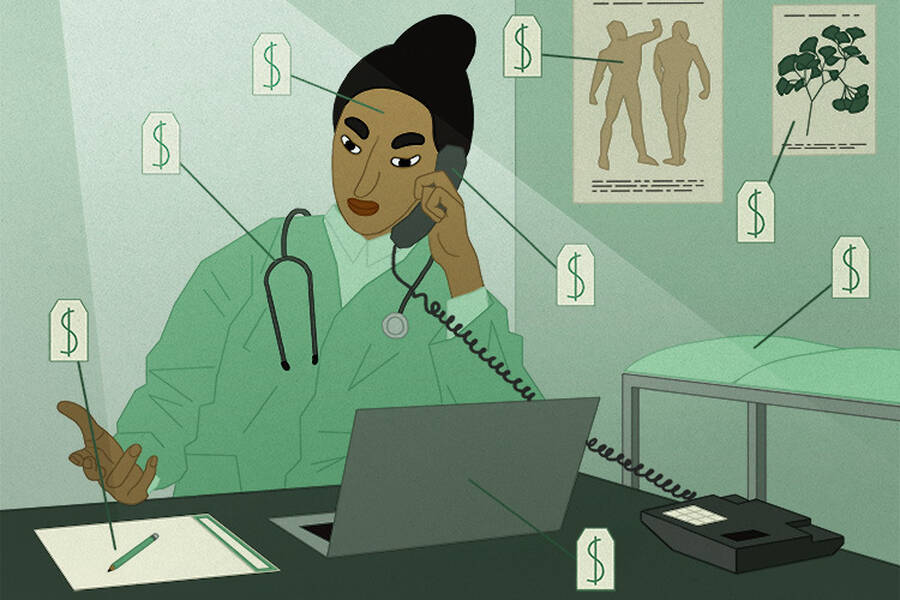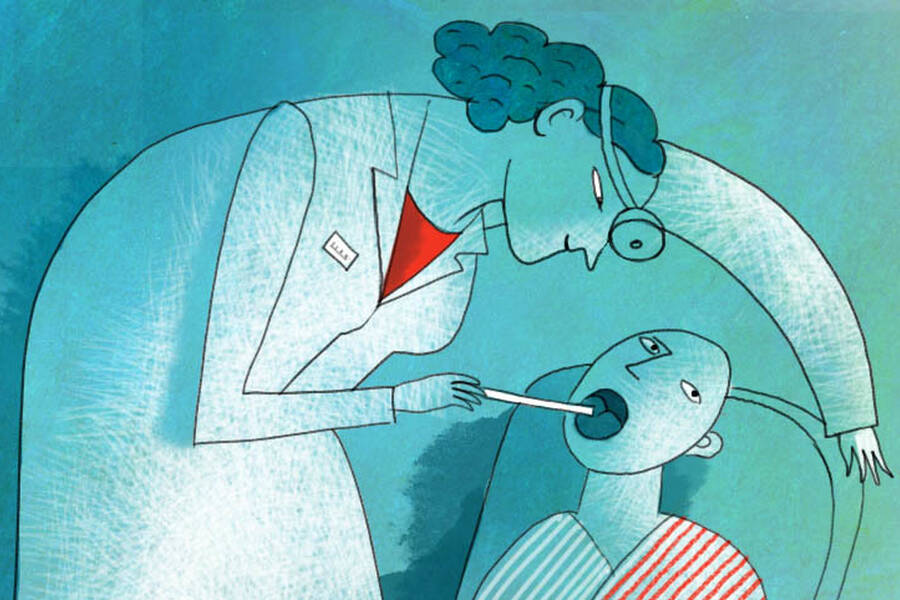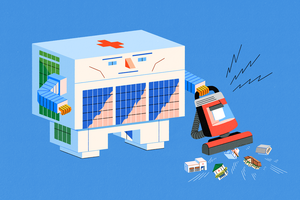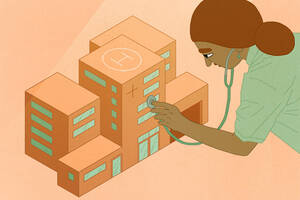Healthcare May 1, 2020
How to Craft Public-Health Messages That Work
The key? Understanding how fear and confidence shape healthy choices.
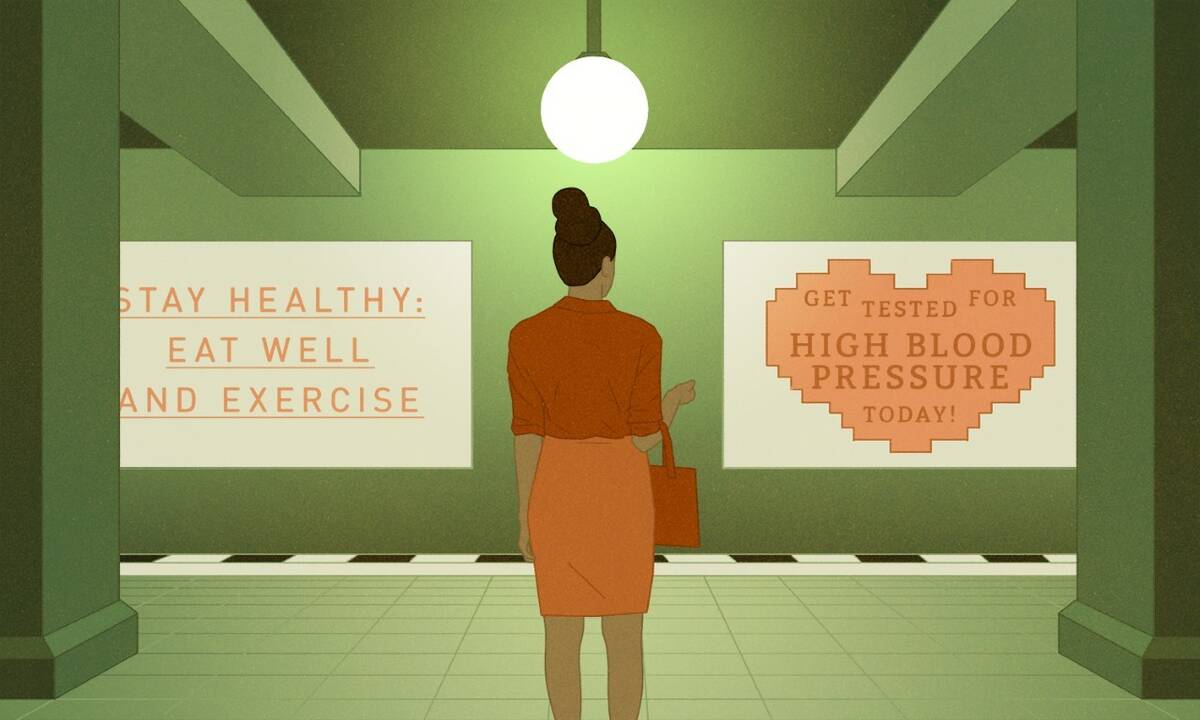
Lisa Röper
Even in the best of times, trying to stay healthy can feel onerous. Slathering on sunscreen, scheduling annual physicals, and regularly washing your hands all take consistent effort.
Which is why scholars have long emphasized the role of self-control in making healthy choices. When we don’t take good care of our health, they argue, a lack of willpower may be at fault.
New research from Chethana Achar, an assistant professor of marketing at the Kellogg School, suggests there’s more to the story. “That may be true for some kinds of preventive health behaviors. But for other types of behaviors, the barrier for acting in a healthy manner is not just self-control, but also that the health behavior itself is intimidating,” she says.
In a recent study, she and coauthors identify the role that fear can play in reducing participation in illness-detection behaviors, such as mammograms or diagnostic tests, which may reveal a serious illness. At the same time, they find that illness-prevention behaviors such as diet and exercise, which aim to prevent a future ailment, are less fear-inducing.
Critically for health workers and policymakers, she also finds that detection and prevention messages are more effective under different conditions.
If you want people to engage in detection, it’s more effective to focus on the process (how to go about scheduling an appointment) than the outcome (a potentially frightening diagnosis). But if the goal is to encourage prevention, it’s more persuasive to emphasize the “why” (maintaining good health) than the “how” (washing your hands). That’s because thinking about the outcome rather than the process of prevention activates our sense of self-efficacy—our belief in our own ability to accomplish goals. And that diminishes nagging questions of whether we can really trust ourselves to follow through on the behaviors.
Indeed, as the world battles a pandemic, it’s perhaps more comforting to think about washing your hands than the prospect of testing for the coronavirus.
“Someone getting tested for a serious infectious disease would likely be more scared than someone setting out to prevent it,” Achar says. The researchers’ findings would suggest that the fear of being diagnosed with a potentially deadly disease is likely to be felt less strongly if people focus on the process of getting tested. In contrast, people are likely to take preventive measures, like hand washing or social distancing, when they focus on the reasons for or the “why” of doing so.
Understanding Differences in Detection and Prevention
Achar and her coauthors— Nidhi Agrawal at the University of Washington and Meng-Hua Hsieh of Kent State University—wanted to understand how people would react when encouraged to take prevention and detection health actions. So, to start, they showed nearly 400 college students a generic ad about depression and its symptoms.
Next, the researchers randomly assigned each participant to one of four groups and asked them to complete a writing exercise in which they described either: 1) how they would detect depression, 2) how they would prevent depression, 3) why they would detect depression, or 4) why they would prevent depression.
“Failure to act in a healthy manner is not always a failure of self-control; sometimes acting healthy is scary.”
Then participants were asked to rate how likely they were to seek help for depression, how scared it made them feel, and how confident in their abilities they felt. “The beauty of this experiment is that everyone sees the same health advertisement and then is randomly assigned to a different condition,” Achar explains. “Any difference in people’s intentions to seek help [as measured by these survey responses] is really driven just by the differences in detection/prevention or how/why.”
When “Why” Is Motivating—and When It’s Scary
Overall, among participants who wrote about detection, those who focused on the “how” were more likely to seek help—and were significantly less fearful—than participants who focused on the “why.” These two detection groups did not differ in their feelings of self-efficacy. Among the participants who wrote about prevention, the pattern was flipped. The “how” and “why” prevention groups reported similar levels of fear, but those who focused on “why” reported higher levels of self-efficacy.
So, what did all of this tell the researchers?
“When considering prevention behaviors, the ‘why’ is attractive because the outcome of illness-prevention is pleasant and desirable. With detection, the ‘why’ is scary,” Achar says. This makes sense, she adds, because it’s a lot more pleasant to focus your attention on staying healthy than it is to think about being diagnosed with an illness.
Want to Help Nervous Nellies to Engage in Detection? Don’t Focus on the “Why.”
In these first two studies, the researchers measured participants’ self-reported experience of fear or self-efficacy. In a third study, the researchers decided to measure participants’ underlying levels of fear and self-efficacy, to see if those inherent qualities, and not the experiment’s manipulations, accounted for the difference in participants’ behaviors.
Their logic was that if fear is what blocks people from detection behaviors, then this block should happen more often with people who are likely to be scared of things in general. People who aren’t generally anxious should behave like they’re in the “how” condition—more willing to seek help with illness detection. Similarly, if self-efficacy is indeed what drives prevention behaviors, then people with generally low self-efficacy should be more susceptible to the pitfalls of thinking about the “how.” Highly efficacious people, by contrast, should feel confident and in general be more likely to pursue prevention behaviors.
So, to test this idea, the researchers recruited a large group of online participants, who completed a fictitious “consumer-opinions study”—a task that was actually designed to measure their personal levels of fear and self-efficacy without mentioning health detection or prevention.
They invited these same participants back ten days later to complete a second task, this time on health behaviors. The setup was similar to the first experiment, only it was about preventing or detecting skin cancer instead of depression.
When the researchers crunched the numbers, they found exactly what they expected: the more generally fearful participants were, the more deterred they were in the “why” condition from seeking care—a pattern not seen in the “how” condition. But less fearful people, the analysis showed, didn’t change significantly in their willingness to seek care, regardless of which condition they were in.
Meanwhile, the lower a participant’s self-efficacy, the more deterred they were from seeking care in the “how” condition. Higher self-efficacy participants, on the other hand, showed similar willingness to seek care in both the “why” and “how” conditions.
When Detection Is Framed as Prevention
Finally, the researchers wanted to see what would happen if they tinkered with the innate association between detection and fear. They also wanted to find out whether people actually did seek out medical advice or treatment—and not just measure what they said they would do.
They recruited over 400 women online to read about a free tool, the National Cancer Institute’s online Breast Cancer Risk Assessment Tool (BCRAT), which detects one’s risk of developing breast cancer. For some women, the BCRAT was framed in this light, as a mode of detection, while for other women it was framed as a detection tool that helped in preventing breast cancer. After reading about BCRAT, participants wrote about either how or why they would use it. Finally, participants were given the opportunity to actually use BCRAT.
When the researchers analyzed the number of fear-related words used in participants’ writing exercises about “how” or “why,” they determined that “when detection is framed as prevention, the amount of fear expressed by participants is far lower,” Achar says.
And in the detection condition, the “why” versus “how” prompt mattered.
Participants who wrote about why they would use the tool were less likely to actually use the BCRAT. But when the detection tool was framed in a more preventive light, everyone used the tool at the higher rate.
In other words, when you make a detection action seem more like a prevention action, you can also make it look a lot less scary.
The Lessons of Detection and Prevention
How might these findings help promote good health habits?
Achar says it is important to understand that behaviors bunched together under the umbrella term of “healthy” behaviors can present very different barriers to consumers: some are difficult to stick to; some are fear-inducing. She suggests that the medical community might want to treat illness detection as a “starting point” on a longer—and less frightening—path toward well-being.
“Failure to act in a healthy manner is not always a failure of self-control; sometimes acting healthy is scary,” Achar says.

